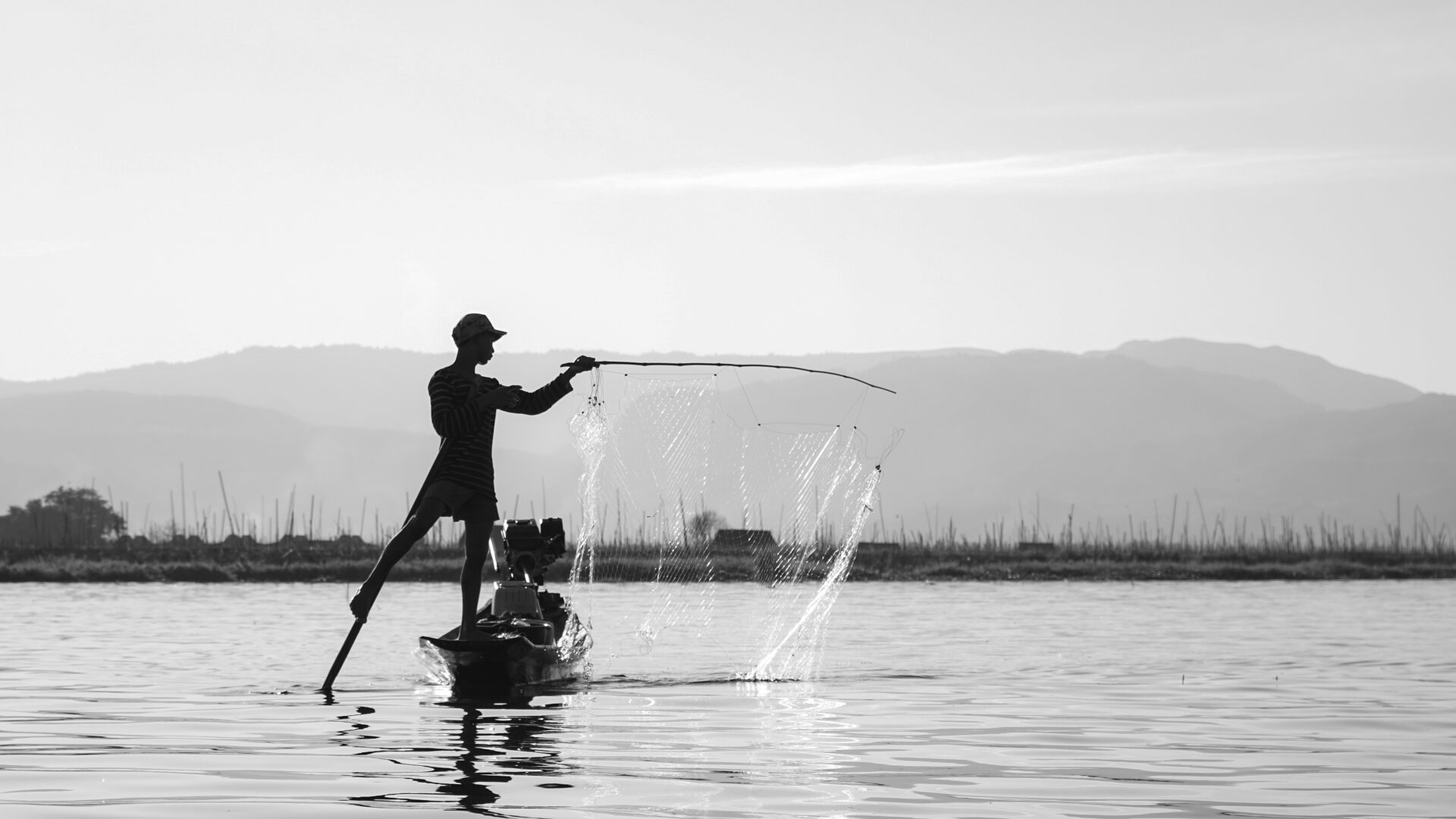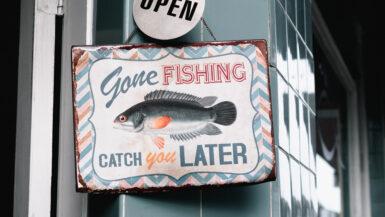Fishing for bass in rivers and streams is a favorite summertime pastime for many anglers. The running water provides warm habitats for the fish and can provide an exciting fishing experience. Whether you’re an experienced angler or a beginner looking to learn the ropes, these tips and techniques will help you hone your skills for catching bass in rivers and streams.
Gear and Preparation
River and stream bass fishing requires the right tackle. A light to medium-power spinning or baitcasting rod will provide the most flexibility when fishing for bass in rivers and streams. In addition, use quality monofilament or fluorocarbon line that is resistant to abrasion caused by rocks and snags. When choosing a line, use the lightest line that will support the lure and allow an effective presentation.
For most river and stream bass fishing, the preferred lure type is small, weedless crankbaits, soft plastic lures, spinners, and topwater lures that generate splash and vibration. Using light tackle — such as a 4- to 6-pound test line — will help the angler catch more bass, as the smaller lures will cast farther and give the bass a realistic presentation.
Dress Comfortably and Appropriately
When fishing for bass in rivers and streams, comfort is key. Wear clothing that is appropriate for the conditions. Long-sleeved shirts, pants, hats, and shoes that protect from the elements and potential hazards are recommended. Also, make sure to bring a good pair of polarized sunglasses to reduce the sun’s glare and help spot bass.
Pack the Right Gear
When fishing for bass in rivers and streams, it is important to pack the right gear. Make sure to bring a net to land the bass, a few small tools to maintain the tackle, a stringer to keep caught bass alive, and some snacks and drinks for refueling. Additionally, bring a pair of waders to stay dry and get closer to the fishing spots. Finally, bring a first aid kit in case of emergency.
Safety First
When fishing for bass in rivers and streams, it is important to keep safety in mind. Always wear a life jacket if fishing from a boat or kayak. People in boats should be aware of the wind conditions, water level and currents in the rivers and streams. In addition, always check the weather forecast before leaving. Be prepared for the weather to change throughout the day.
Locating Bass in Rivers and Streams
Fishing for bass in rivers and streams requires a good understanding of how bass behave in these environments. Bass typically congregate in areas that provide cover and structure such as rocks, logs and other debris. These areas offer bass the opportunity to ambush other fish and the cover provides safety and protection from predators. Bass typically stay close to the bottom and are more active in the evening and early morning. Knowing these behaviors of bass can help anglers to better locate bass in rivers and streams.
Fish Around Points, Ledges and Cover
Fishing around points, ledges and cover can be a great way to find bass in rivers and streams. Points are areas where the current of the river or stream flows around a curve and often have deeper water. Ledges are areas where the bottom drops off sharply and the water is deeper. Cover such as logs, rocks and vegetation can provide bass with hiding spots and places to ambush their prey. Fishing around these areas can be a great way to target bass in rivers and streams.
Look for Areas With Deeper Water
Bass in rivers and streams tend to stay in areas with deeper water. Anglers should look for areas with deeper water, usually found near points and ledges. Deep pools, deep holes, back eddies and slack water can also be great places to find bass in rivers and streams. These areas offer bass more safety and protection and can give anglers a better chance of hooking into a big one.
Search for Moving Water
When fishing in rivers and streams, moving water can often be a great place to find bass. Bass typically hang out near riffles, rapids and fast moving water looking for an easy meal. Fishing in areas with moving water can be a great way to target hungry bass that are lurking in these areas.
Fish Shallow Water in the Early Mornings and Late Evenings
Bass in rivers and streams can often be found in shallow water in the early morning and late evening hours. This is when bass are most active and willing to feed. Fishing in shallow water at these times of day can be a great way to locate and target bass in rivers and streams.
Techniques for Fishing in Rivers and Streams
Fishing for bass in rivers and streams can be both challenging and rewarding. If you’re new to this type of fishing, it’s important to understand the basics before getting started. Rivers and streams have a variety of conditions and terrain that can affect the type of fish you’ll find there. Knowing the characteristics of the river or stream can help you identify the best places to cast your line.
Selecting the Right Gear
To make the most of your fishing experience, you’ll need the right gear. Choose a lightweight rod and reel that can handle heavier lures and stronger currents. Bait-casting or spinning reels are a good option for targeting bass in rivers and streams. For lures, try using crayfish imitators, hollow-bodied frogs and other weedless lures that mimic the natural food bass are likely to feed on.
Choosing the Right Fishing Spots
When it comes to rivers and streams, every spot is different and can be a potential hotspot for bass. To find the best locations to fish, look for structure and cover. Deeper pools with logs, rocks, or other structure beneath the surface can be a great place to find bass. Also look for areas of shallow water with rocks or vegetation, which will act as hiding spots for bass.
Using the Right Techniques
When fishing in rivers and streams, make sure you use the right techniques. Casting your lure upstream and letting it drift downstream can be an effective method. Try fishing around structure, as well as areas of current, to maximize your chances of catching bass. Moving your bait slowly makes it more enticing to the fish. If you’re not having any luck, you can try changing to a smaller, lighter lure or using a different color.
Knowing the Regulations
Before you start fishing, it’s important to know the regulations for the river or stream you’re fishing in. Different areas have different regulations for the size and number of fish you can keep, so make sure you’re aware of the laws and practice catch and release for any fish that don’t meet size requirements.
Tips for Fishing in Rivers and Streams
Fishing in rivers and streams presents its own challenges, but there are some tips that can help you get started. First, make sure you go prepared with the right gear and supplies. Second, try to fish in areas with cover and structure, as this is the best place to find bass. Third, use the right techniques to make sure your lures are moving through the water in a natural and enticing way. Finally, make sure you’re aware of the local regulations and practice catch and release whenever possible.
Best Baits for Bass Fishing in Rivers and Streams
Fishing for bass in rivers and streams is an exciting and rewarding sport. To increase your chances of successfully catching bass, it’s important to understand the type of fish you’re targeting and the best baits to use. In this article, we’ll provide an overview of the best baits for bass fishing in rivers and streams and the techniques you can use to attract these fish.
Choose the Right Kind of Bait
The type of bait you should use for bass fishing in rivers and streams will depend on the species of bass you’re targeting. Smallmouth bass generally prefer smaller baits like leeches, crayfish and minnows, while largemouth bass tend to go for larger offerings such as plastic worms, jigs and spinnerbaits. Soft plastic worms, tubes and jigs are especially effective for bass fishing in rivers and streams. The type of bait you choose should also be matched to the size of the river or stream. If the water is shallow, go for smaller baits, while in deeper waters, bigger baits are recommended.
Attracting Bass with Live Bait
Live bait is one of the best methods for catching bass in rivers and streams. Live minnows, worms, crayfish and other baitfish are an effective way to attract bass, as they are able to detect their movements in the water. Live bait can be rigged onto a hook or lure and can be fished in a variety of ways, including bottom bouncing, casting, trolling and jigging.
Tackle Selection for Bass Fishing in Rivers and Streams
When it comes to tackle selection for bass fishing in rivers and streams, it’s important to choose the right rod, reel and line. Spinning rods and reels are typically used for smaller baits, while baitcasting reels are better suited for larger offerings. Monofilament line is the most popular choice for bass fishing in rivers and streams, but you can also opt for braid for increased sensitivity.
Top Lures for Bass Fishing in Rivers and Streams
In addition to live bait, there are a variety of lures that can be used for bass fishing in rivers and streams. Topwater lures such as buzzbaits and poppers are great for targeting fish that are actively feeding on the surface, while jigs and crankbaits are more suitable for deeper waters. Spinnerbaits and crankbaits are also popular choices, as they can be used to target bass at different depths.
By following the tips and using the proper bait and tackle, you can increase your chances of a successful bass fishing trip in rivers and streams. Understanding the behavior of the bass, and selecting the right bait and tackle can make all the difference when it comes to catching these elusive fish.
Tips and Considerations for Successful Bass Fishing in Rivers and Streams
When it comes to fishing for bass in rivers and streams, it is important to have the right gear. The type of rods, reels, lures, and bait you use can make a difference in your success. For example, a medium heavy action rod and reel is well suited for rivers and streams, as is a spinning reel for casting. Lures can range from plastic worms and crankbaits to spinnerbaits and spinners. Bait such as live worms, nightcrawlers, and minnows can also be used to entice bass.
Identify Bass Hot Spots
When fishing for bass in rivers and streams, it is important to identify the spots that are likely to produce the most success. Look for areas with boulders, log jams, or other structure that provide areas for bass to hide and ambush their prey. In addition, deeper pools and areas of current or eddies can also be good places to fish for bass.
Know the Weather and Water Conditions
It is also important to consider the weather and water conditions when fishing for bass in rivers and streams. The water temperature, flow, and clarity can have a major effect on the behavior of bass and the amount and type of success you may have. For instance, warmer and slow-moving waters will be more successful for catching bass than colder, faster-moving waters.
Choose the Right Lures
When it comes to lures, it is important to choose the ones that are best suited for the type of water, weather, and bass you are looking to catch. For example, topwater lures such as poppers, buzzbaits, and frogs are good choices for shallow, murky waters. On the other hand, if you are fishing in deep and clear waters, try using jigs, crankbaits, and plastic worms.
Keep an Eye Out for Fish Movement
When fishing for bass in rivers and streams, it is important to keep an eye out for fish movement. Look for splashes, swirls, and following activity that can indicate that bass are feeding. If you spot any, you may want to change your lure or bait to match the type of prey that bass are feeding on.
Be Patient and Persistent
The most important tip for successful bass fishing in rivers and streams is to be patient and persistent. It may take some time to find areas that are likely to produce the most success. Cast your lure and bait often, and be alert to any changes in the water or fish movement. With enough patience and persistence, you should be able to find success and have a great day on the water.
Tips to Ensure a Successful Fishing Trip
Fishing for bass in rivers and streams is an enjoyable way to relax and enjoy the outdoors. To ensure a successful trip, it is important to use the right gear and baits, and to understand how to read the water. Start by choosing the right rod and reel that is suitable for the type of water you will be fishing in. Then, choose the appropriate bait such as worms, plastic lures, and crankbaits. Lastly, pay attention to the water to make sure you are fishing in the right spot. Remember to practice catch and release when fishing for bass, to ensure there are plenty of bass for future generations. With the right gear and a proper understanding of the environment, anyone can enjoy a successful fishing trip for bass.





Leave a reply